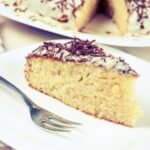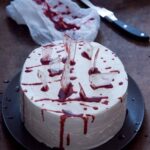Are you looking to learn how to decorate a mini cake for your next special occasion? Mini cakes have been gaining popularity as a charming and customizable dessert option for events such as birthdays, weddings, and showers. Decorating these petite treats adds an extra element of elegance and personalization, making them stand out on any dessert table. From piping intricate designs to crafting delicate fondant decorations, there are endless creative possibilities when it comes to decorating mini cakes.
In this article, we will explore the essential tools and ingredients needed to decorate a mini cake, offer tips for selecting the perfect mini cake base, provide step-by-step instructions for preparing the mini cake for decorating, and guide you through various techniques and themes to elevate your mini cake’s appearance. We’ll also share expert advice on achieving a professional finish and adding final touches for a stunning presentation.
Whether you’re new to cake decorating or looking to elevate your skills, this comprehensive guide will help you create beautifully decorated mini cakes that will leave a lasting impression on your guests. Let’s dive into the art of decorating these delightful miniature desserts.
Necessary Tools and Ingredients
Decorating a mini cake can be a fun and creative way to make any occasion feel extra special. To successfully decorate a mini cake, it’s important to have the necessary tools and ingredients on hand. Here is a detailed list of essential items you will need to achieve professional-looking results:
- Piping bags: These are essential for applying buttercream, royal icing, or other decorative elements to your mini cake.
- Tips: Various piping tips allow for different designs and effects, so having a variety of tips in different sizes and styles is helpful.
- Fondant: Fondant can be used to cover the entire mini cake or create intricate details and decorations.
- Edible glitter: Adding a touch of sparkle with edible glitter can instantly elevate the appearance of your mini cake.
- Food coloring: A set of gel-based food colors will allow you to achieve vibrant and consistent colors for your decorations.
Before you start decorating, it’s essential to choose the right base for your mini cake. The flavor, size, and shape of the mini cake should complement the desired decoration. Additionally, properly preparing the mini cake for decorating is crucial. This includes leveling the cake layers, filling them with delicious fillings, and creating a smooth base layer of frosting.
Lastly, adding final touches to the decorated mini cake and presenting it beautifully is key for leaving a lasting impression. Consider adding fresh flowers, edible pearls, or custom-designed cake toppers that match your theme.
By having these essential tools and ingredients at your disposal, you’ll be well-equipped to create beautifully decorated mini cakes for any special occasion.
Choosing the Right Mini Cake
When it comes to decorating a mini cake, choosing the right base is essential to ensure that your decorative efforts shine. Here are some tips for selecting the perfect mini cake that will complement your desired decoration:
- Flavors: Consider the flavor profile of your mini cake and how it will pair with the decorations. For example, if you plan to use floral or fruity decorations, a vanilla or lemon-flavored mini cake may be a great choice. If you’re using rich chocolate decorations, a chocolate or red velvet mini cake could be ideal.
- Sizes: The size of your mini cake should be determined by the number of servings you need and the overall design aesthetic. Smaller cakes are suitable for individual servings, while larger ones can accommodate more intricate decorations and themes.
- Shapes: Mini cakes come in various shapes, including round, square, and even novelty shapes like hearts or stars. Consider the theme or design of your decoration when choosing the shape of your mini cake to ensure that they complement each other perfectly.
By carefully considering the flavors, sizes, and shapes of your mini cake base, you can set yourself up for decorating success and create a stunning masterpiece that not only looks great but tastes delicious too.
Remember that ultimately, the goal is to have fun and let your creativity shine through as you choose the perfect mini cake base for your next decorating project.
Preparing the Mini Cake
To ensure that your mini cake has a professional and polished appearance, it is crucial to start by leveling it. Using a serrated knife or a cake leveler, carefully trim off the dome from the top of the cake to create an even surface. This step is essential for creating a stable base for decorating and stacking layers.
Once your mini cake is leveled, you can begin filling it with delicious frosting or filling of your choice. Using a piping bag or an offset spatula, spread a generous layer of frosting on top of the first layer and gently place the second layer on top. Repeat this process if your mini cake consists of multiple layers, ensuring that each layer is evenly filled for consistency.
After filling the mini cake, it’s time to frost it with a smooth and even layer of buttercream or ganache. Using an offset spatula or a bench scraper, apply a thin layer of frosting to the entire cake to seal in any crumbs and create a smooth surface. Once you have achieved an even coating, refrigerate the mini cake for 15-20 minutes to allow the frosting to set before applying a final, thicker layer for decoration.
By following these step-by-step instructions for preparing your mini cake, you will ensure that it is ready for decorating while maintaining its shape and structure. The proper preparation lays the foundation for beautifully decorated mini cakes that are sure to impress at any special occasion.
Decorating Techniques
Decorating a mini cake can be a rewarding and creative process, offering plenty of opportunities to showcase your skills and personal style. Understanding various decorating techniques is essential to elevate the appearance of your mini cake and make it stand out on special occasions. Whether you’re a beginner or an experienced baker, mastering these techniques will help you achieve a professional-looking finish for your decorated mini cake.
One of the most popular decorating techniques for mini cakes is piping. Piping allows you to create intricate designs using buttercream, royal icing, or ganache. You can use different piping tips to achieve various patterns, textures, and shapes on your mini cake. From simple borders to elaborate floral designs, piping offers endless possibilities for decorating mini cakes.
Another important technique to master is fondant work. Fondant is a versatile sugar paste that can be rolled out and draped over the mini cake for a smooth and polished look. It can also be used to create 3D decorations, such as flowers, bows, or figurines, adding an extra layer of elegance to your mini cake. With the right tools and practice, fondant work can take your decorating skills to the next level.
If you’re feeling particularly artistic, edible painting is another technique worth exploring. Using food coloring or edible paint made from luster dust or petal dust mixed with alcohol or lemon extract, you can hand-paint designs directly onto the surface of your mini cake.
This technique allows for total creativity and customization, making each mini cake a unique work of art. Lastly, embellishments such as edible pearls, dragees, sprinkles, or even real flowers can add texture and visual interest to your mini cake’s design.
Theme and Design
When it comes to decorating a mini cake, the theme and design play a crucial role in creating an eye-catching and visually appealing dessert. Before you begin the decorating process, it’s important to choose a theme or design that aligns with the occasion or your personal preferences.
Whether you’re aiming for a romantic floral design for a wedding mini cake or a playful and colorful theme for a birthday celebration, the options are endless. Consider the recipient’s interests, favorite colors, or the overall mood of the event to guide your theme selection.
Once you have chosen a theme for your mini cake, it’s essential to focus on executing it flawlessly. This involves paying attention to detail when it comes to matching colors and patterns. If you’re incorporating specific colors into your design, ensure that they complement each other harmoniously.
For example, if you’re using fondant or icing in multiple colors, consider using a color wheel as a guide to create visually appealing combinations. Additionally, if your chosen theme involves patterns such as stripes or polka dots, take the time to measure and plan their placement on the mini cake for a polished finish.
In addition to choosing a theme and executing its design impeccably, don’t be afraid to let your creativity shine through during the decorating process. Whether it’s adding personalized touches that reflect the recipient’s personality or experimenting with unconventional color palettes, infusing creativity into your mini cake decorations can result in stunning and unique outcomes.
| Mini Cake Theme | Design Inspiration |
|---|---|
| Floral Elegance | Soft pastel colors with delicate fondant flowers |
| Ocean Adventure | Bright blues and greens with fondant sea creatures |
| Vintage Glamour | Retro-inspired patterns with metallic accents |
Tips for a Professional Finish
Smoothing Buttercream
Achieving a perfectly smooth buttercream finish on a mini cake can be a bit tricky, but with the right techniques, it is absolutely achievable. Once you have applied the initial coating of buttercream to your mini cake, use a bench scraper or offset spatula to gently smooth the surface.
Rotate the cake as you go to ensure an even layer of buttercream all around. For any small imperfections, use a hot spatula to gently smooth out bumps and ridges for a flawless finish.
Avoiding Common Decorating Mistakes
There are several common mistakes that can occur when decorating mini cakes, such as air bubbles in fondant, uneven piping, and color bleeding in buttercream. To prevent air bubbles in fondant, roll it out evenly and gently press it onto the cake without trapping any air underneath.
When piping decorations onto your mini cake, make sure to apply consistent pressure for even lines and designs. To avoid color bleeding in buttercream, allow your base coat to set before adding additional colors on top.
Proper Storage and Transportation
Once you have achieved a professional-looking finish on your decorated mini cake, it’s important to know how to properly store and transport it to maintain its appearance. Store the finished mini cake in a cool, dry place away from direct sunlight or heat sources.
To transport the mini cake safely, use a sturdy cake box or container with a secure lid to prevent any damage during transit. Consider using non-slip shelf liners or damp paper towels at the base of the container to keep the cake stable while traveling.
Final Touches and Presentation
To truly elevate the appearance of a mini cake, it’s important to focus on the final touches and presentation. One popular final touch for mini cakes is to add fresh flowers as a decorative element. Edible flowers, such as pansies or violets, can be used to add a pop of color and elegance to the mini cake. Before adding flowers, ensure they are thoroughly washed and free from pesticides.
Another option for final touches is to incorporate edible pearls or metallic accents to give the mini cake a touch of glamour. These small details can make a big impact and create a stunning overall look for any special occasion. Additionally, using shimmer dust or edible glitter can add a magical sparkle to the mini cake, making it an eye-catching centerpiece at any event.
When presenting the decorated mini cake, consider placing it on a decorative cake stand or tray that complements the theme and design of the cake. Adding elements like ribbon, lace, or personalized cake toppers can further enhance the presentation of the mini cake. Paying attention to these final details will not only make the mini cake visually appealing but also create a memorable experience for those enjoying it.
Conclusion
In conclusion, decorating a mini cake is an enjoyable and rewarding process that allows for creativity and personalization. By following the essential steps outlined in this guide, anyone can successfully decorate a mini cake for any special occasion. From selecting the right tools and ingredients to executing various decorating techniques and adding final touches, the possibilities for creating a beautifully decorated mini cake are endless.
It’s important to remember that practice makes perfect when it comes to decorating mini cakes. Don’t be discouraged if your first attempt doesn’t turn out exactly as planned – with time and experience, you’ll develop your own unique style and technique. The key is to have fun with the process and experiment with different designs, themes, and colors to truly make each mini cake your own masterpiece.
So, I encourage all readers to try their hand at creating their own decorative mini cakes. Whether it’s for a birthday, wedding, or just for fun, the satisfaction of presenting a beautifully decorated mini cake that you’ve created yourself is truly priceless. With the right tools, ingredients, and a little bit of patience, you can turn a simple mini cake into a work of art that will impress any audience.
Frequently Asked Questions
How Do You Frost Mini Cakes?
Frosting mini cakes can be done in various ways, depending on your preference and the occasion. One way is to use a piping bag to add decorative swirls or patterns with frosting, creating an elegant and eye-catching design on each mini cake.
Another option is to carefully spread a thin layer of frosting over the entire surface of the cake for a more minimalist and polished look. Drizzling melted chocolate or a glaze over the mini cakes is another creative way to frost them, adding flavor and visual appeal.
How Do You Make a Plain Cake Look Fancy?
There are several ways to make a plain cake look fancy without too much effort. One simple method is to dust the top of the cake with powdered sugar or cocoa powder using a fine mesh sieve, which adds an elegant finishing touch.
Fresh fruit slices or berries arranged on top of the cake can also instantly add color and sophistication while giving it a fresh, natural look. For an extra fancy touch, edible flowers or gold leaf can be delicately placed on top of the cake for a luxurious appearance.
What Can I Put on a Cake Instead of Frosting?
If you prefer not to use traditional frosting on a cake, there are alternative options that still add flavor and appeal. A whipped cream topping offers a light and airy alternative to frosting, especially when flavored with vanilla or fruit extracts. A drizzle of caramel or ganache can add richness and decadence to the cake without fully covering it like frosting would.
Dusting the cake with cocoa powder, powdered sugar, or finely chopped nuts can also create an attractive finish while adding flavor. Finally, a simple fruit compote or jam spread over the top of the cake can provide sweetness and moisture without using traditional frosting.

Welcome to my blog about home and family. This blog is a place where I will share my thoughts, ideas, and experiences related to these important topics. I am a stay-at-home mom with two young children. I hope you enjoy reading it! and may find some helpful tips and ideas that will make your home and family life even better!





